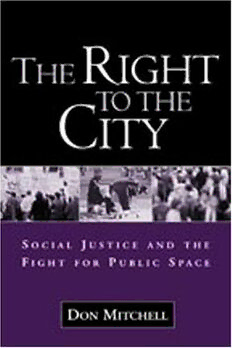
The Right to the City: Social Justice and the Fight for Public Space PDF
140 Pages·2003·16.72 MB·English
Most books are stored in the elastic cloud where traffic is expensive. For this reason, we have a limit on daily download.
Preview The Right to the City: Social Justice and the Fight for Public Space
Description:
In the wake of recent terrorist attacks, efforts to secure the American city have life-or-death implications. Yet demands for heightened surveillance and security throw into sharp relief timeless questions about the nature of public space, how it is to be used, and under what conditions. Blending historical and geographical analysis, this book examines the vital relationship between struggles over public space and movements for social justice in the United States. Presented are a series of linked cases that explore the judicial response to public demonstrations by early twentieth-century workers, and comparable legal issues surrounding anti-abortion protests today; the Free Speech Movement and the history of People's Park in Berkeley; and the plight of homeless people facing new laws against their presence in urban streets. The central focus is how political dissent gains meaning and momentum--and is regulated and policed--in the real, physical spaces of the city.
See more
The list of books you might like
Most books are stored in the elastic cloud where traffic is expensive. For this reason, we have a limit on daily download.
